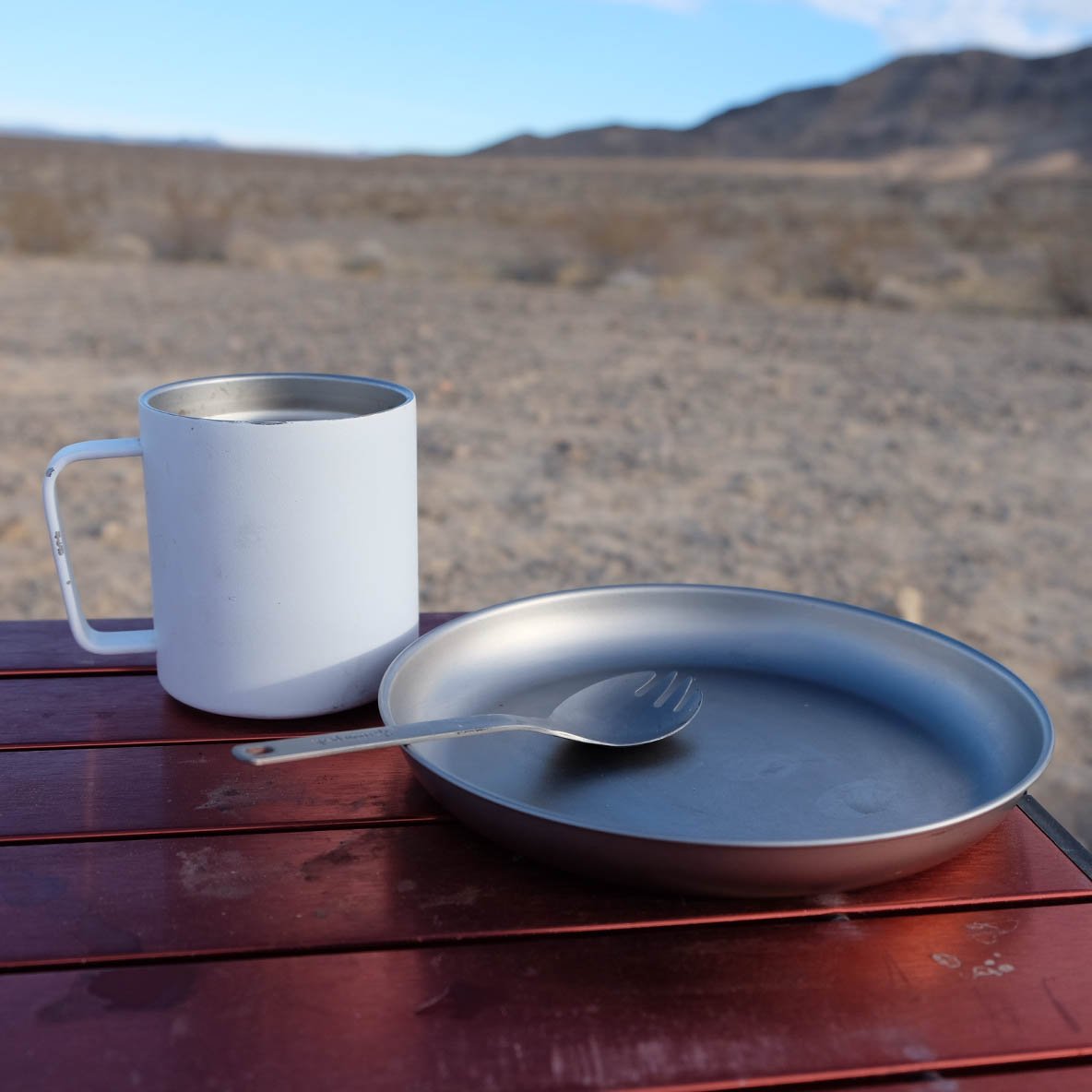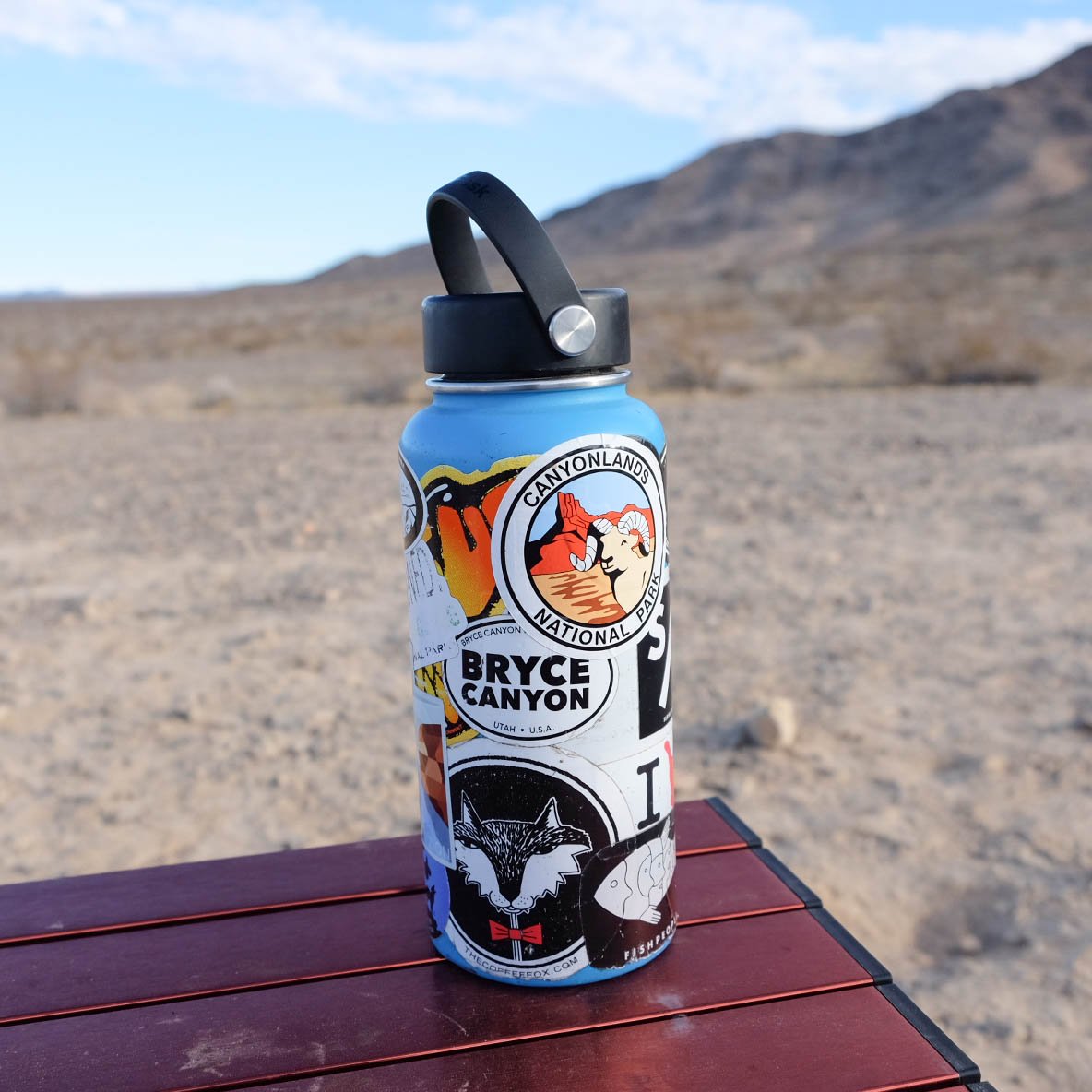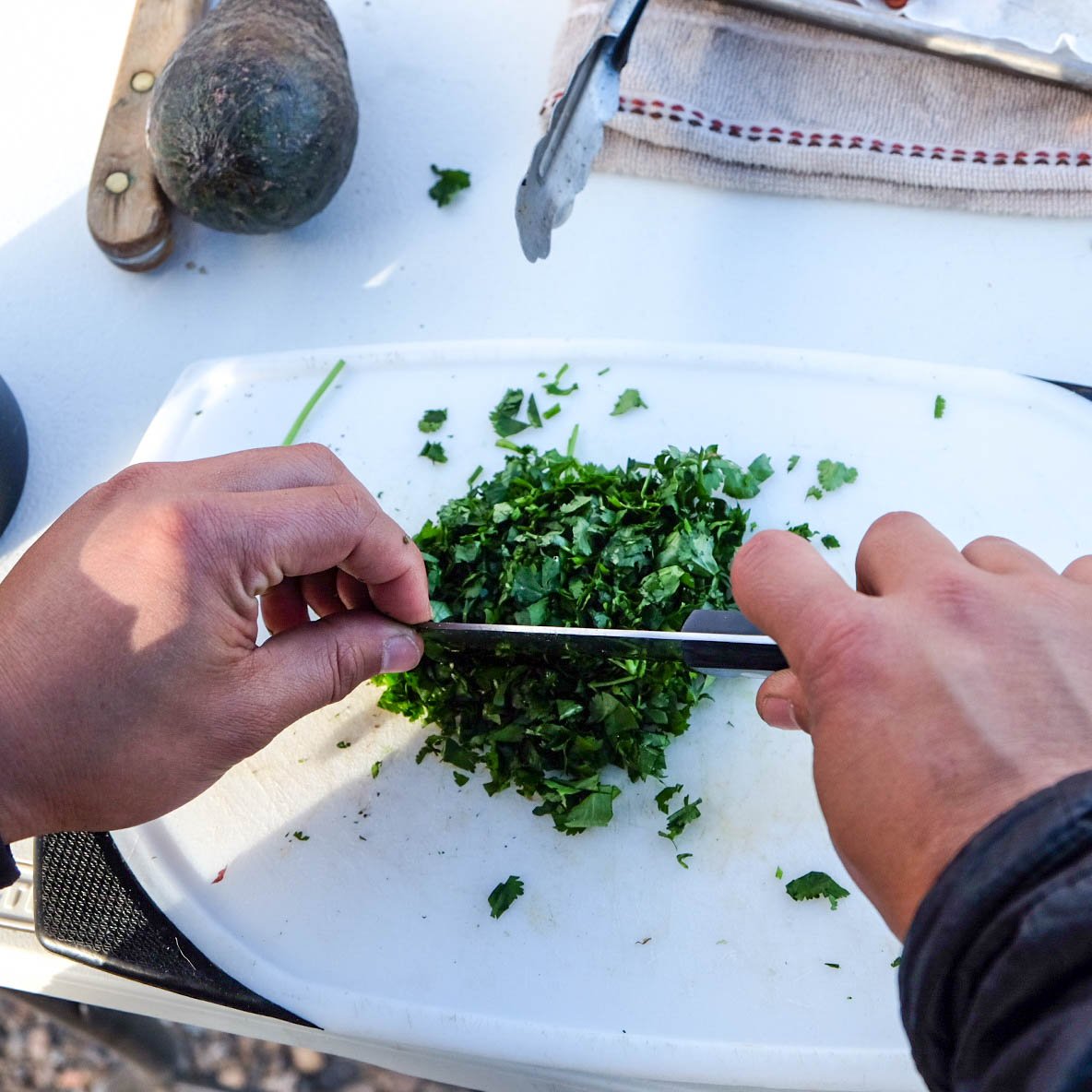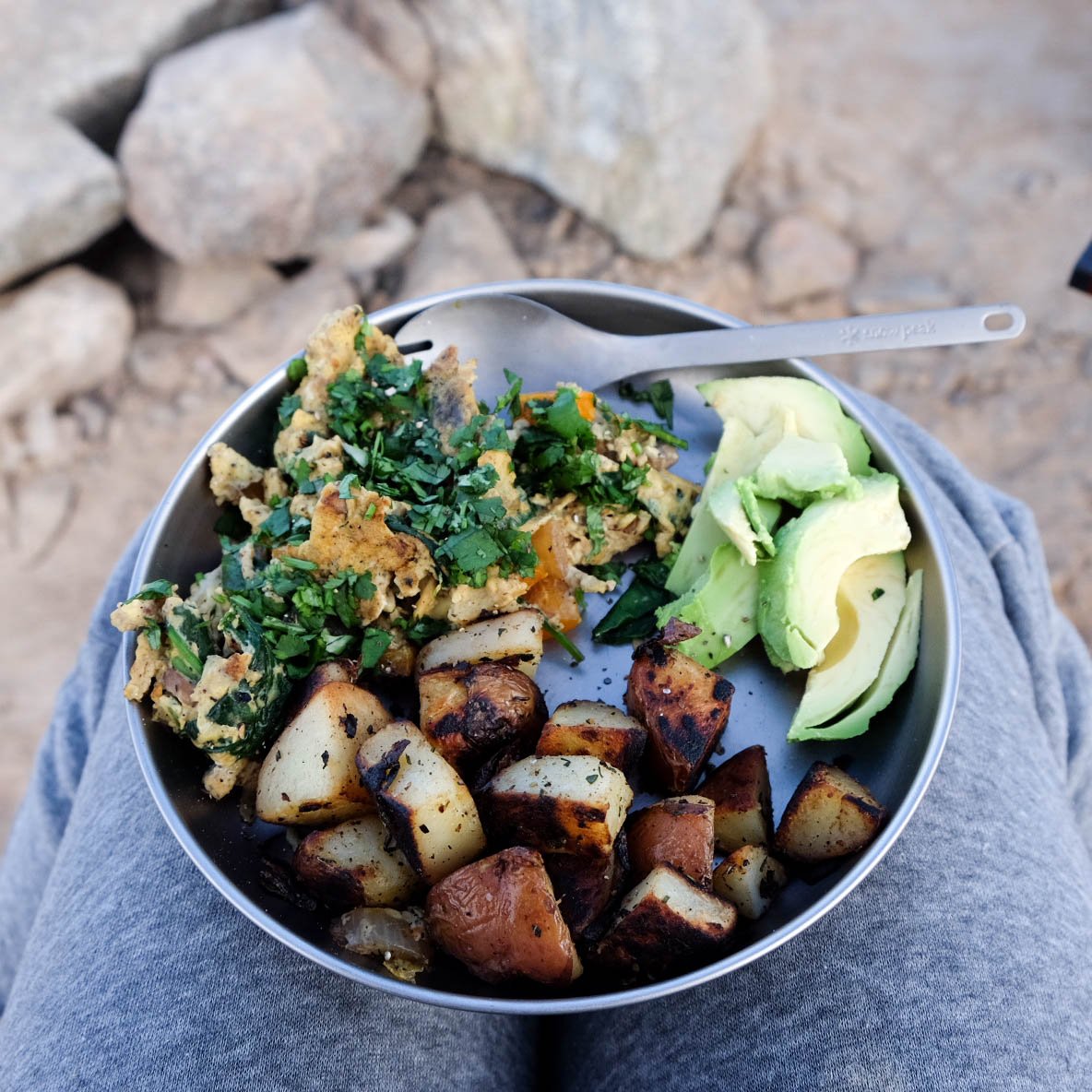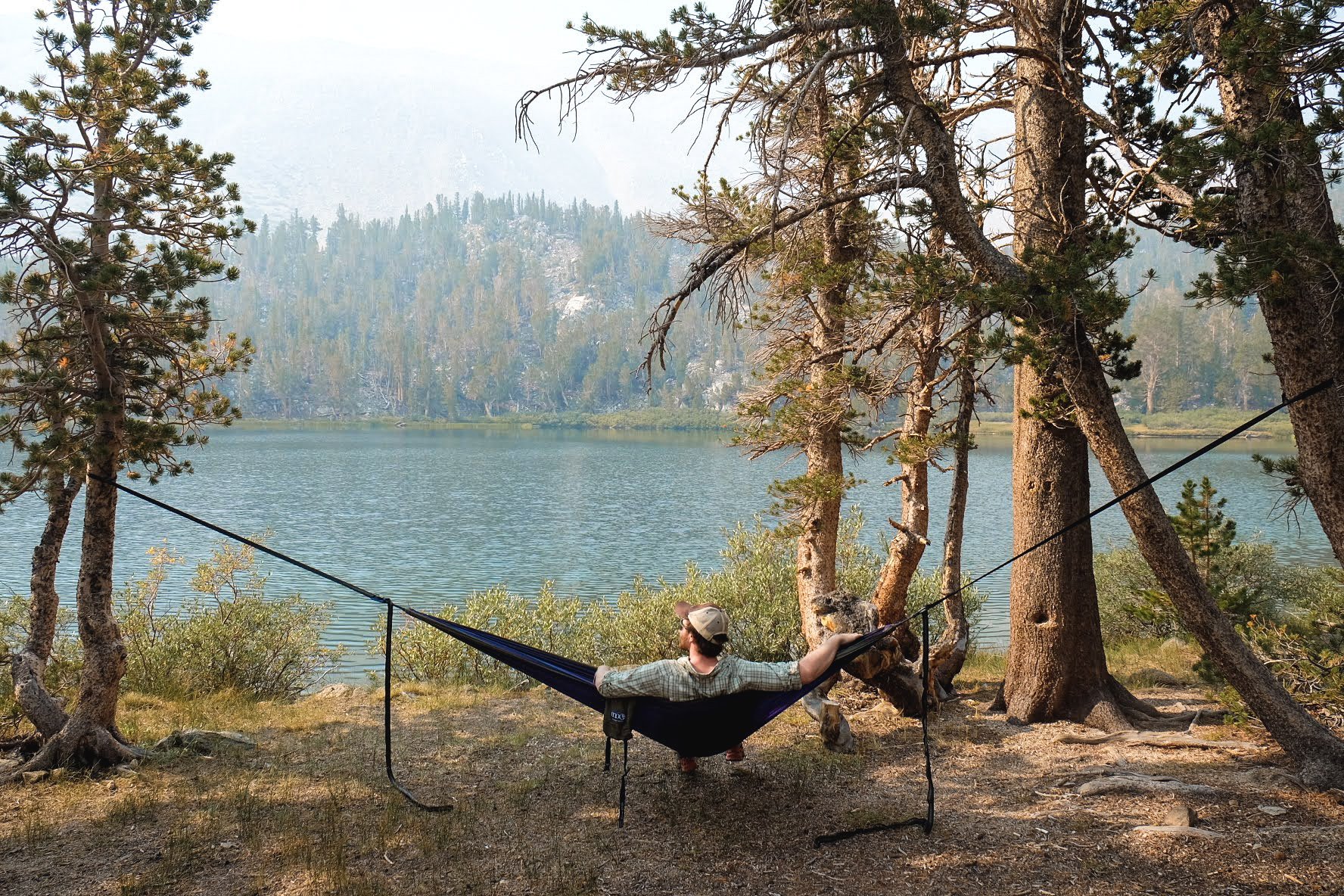Zero Waste Camping Tips!
I’ve found that every few weeks, I very much need an escape from Los Angeles. Don’t get me wrong, I love LA, but over time I’ve learned that for me, breaks from the city are vital. Whether it’s car camping in the high desert, backpacking in the eastern Sierra, or pitching a tent somewhere along the central coast, I’m just happy to breath in some fresh air and enjoy the starry night skies. Fortunately, living in LA grants us relatively easy access to a variety of gorgeous landscapes and while longer trips are always ideal, I can often turn a regular old weekend into the reset I need.
With every camping excursion, I try my best to be as sustainable and zero waste as I possibly can. Below are a few tips that I hope come in handy on your next camping trip!
Tip #1: Leave No Trace
Leave No Trace consists of 7 principles that act as guidelines to help outdoor visitors minimize their impact. It’s helpful to give them a read as you learn some basics like not to camp within 200ft of a body of water, what to consider when choosing a campsite, and how to dispose of human waste properly. However, please don’t go overboard with it. Just like it’s impossible to be 100% zero waste, it’s impossible to 100% leave no trace, so there’s no need to become the Leave No Trace police. They’re helpful guidelines intended to increase mindfulness while enjoying the outdoors.
Tip #2: Whenever possible, go reusable
Convenience is tempting. Throwaway things make cleanups easier and on chilly nights, the absolute last thing I want to do is scrub a plate in cold water. It’s so easy just to toss a paper plate in the trash. It’s easy to grab a plastic water bottle out of a pack. Paper towels are of the utmost convenience. But switching out as many disposable things as possible for reusables drastically cuts back on the trash your campsite produces.
Easy reusable swaps while camping:
Reusable Water Bottle: Choose a reusable bottle over a pack of disposable plastic. I love my insulated Hydroflask. However if you plan on hiking and prefer something a little lighter, you may want to consider a reusable plastic bottle (like Nalgene). Personally, I love my Hydroflask and endure the extra weight.
Reusable Water Jug: You’re going to need to fill up that reusable bottle! We invested in a 4-gallon, reusable plastic jug with a spigot that we fill up at home before heading out on our trip. It feels great knowing we’ve completely eliminated disposable plastic when it comes to having water at our campsite.
Titanium Dinnerware: Swap paper plates and disposable plastic utensils for titanium! I love my titanium spork and plate. They’re durable, and extremely lightweight. I went with titanium for the versatility (I love both car camping and backpacking and wanted something lightweight for long backpacking trips when every ounce matters), however, there are other options if lightweight isn’t as important to you! Enamelware, reusable plastic, and stainless steel may be worth looking into and can likely even be found secondhand which drastically cuts down on cost!
Dish towels: We are a paper towel-free household, so we try to also maintain a paper towel-free campsite. Now, we still bring a roll just in case. But having the reusable towels for napkins and dish cleaning makes us rely on paper a whole lot less (so much so that we’ve had the same roll of paper towels in our camping box for over a year!).
Stasher bags or beeswax wraps: I’m not a huge fan of peanut butter & jelly sandwiches, but for some reason when I’m camping, I find them extremely satisfying! I love throwing one in my backpack to enjoy while admiring an epic view after a strenuous hike. I use Stasher instead of single-use ziplock plastic baggies and love them (Beeswax wraps could also work). Fill them with carrot sticks, trail mix, pretzels, or a pb&j!
Tip #3: Low Waste Meals and Snacks
I’m not perfect when it comes to zero waste camping meals. Sacrificing something like s’mores to avoid a marshmallow bag or policing your camping buddies on what they can and cannot eat can become over the top, in my opinion. So I try to be conscious as well as realistic by:
Planning ahead to avoid any food waste.
Opting for plastic-free snacks like fruits and veggies. Planning meals that don’t require loads of plastic packaging like eggs + veggies for breakfast, for example.
Bringing a french press or pour over for coffee (although, admittedly, clean-up is a little annoying) and grinding the beans at home beforehand. When backpacking, I use instant coffee.
And if I have time...making homemade energy balls, granola bars, muffins, trail mix from bulk are all great options.
Tip #4: Food Waste is Litter. Treat it as so.
Just because it’s biodegradable does NOT mean you should be tossing it into the brush behind your campsite. A banana peel can take several years to decompose! Recently, we arrived at a campsite and found egg shells scattered around it. Respect the local wildlife and respect future campers by packing out all trash, food included. If you compost at home, bring a bin with you to store your food scraps until you can properly dispose of them when you get home.
Tip #4.1: Remember a Trash Bag and Separate Recycling
Remember to bring a bag for trash and separate recyclables. Before you leave your campsite, do a thorough sweep to make sure you’re leaving the area cleaner than you found it. Pack out all trash, even if it was already there when you arrived.
Tip #5: Invest in high-quality gear that will last, buy secondhand, or rent/borrow.
Good gear is worth it. If you think you’ll be camping often, do your research and buy quality gear that will last. High quality gear, however, isn’t cheap so I’m happy to report that many camping essentials can be purchased secondhand at a significantly discounted price! My hiking boots, our tent, and my boyfriend’s sleeping bag and hiking poles were all purchased at the REI “Garage Sale”. Due to Covid-19, REI isn’t having their traditional “Garage Sales” and instead has a section of their store dedicated to these items. You can also find secondhand REI gear here. And second hand Patagonia gear here. My absolute favorite winter parka that has saved me on numerous winter camping trips was purchased from the secondhand clothing store Buffalo Exchange for $30!
Don’t think you’ll be camping often but have a trip coming up? Rent gear from a local outdoor retailer or from REI or borrow from a friend!
You don’t have to invest in all your camping gear at once. Even when opting for secondhand, it can start to add up. I’ve been slowly collecting camping gear for almost 5 years now.
Tip #6: Debrief. Go over what went well and what did not.
On our drive home, we like to go over our trip and discuss how we can do better next time in regard to sustainability, efficiency, and comfort. We think this has helped make us better visitors of the outdoors.
Final Words
As with all things zero waste, don’t stress about being perfect. It’s all about being conscious and mindful. Enjoy this beautiful planet and come home inspired to keep fighting to protect it :)
Happy Camping!


